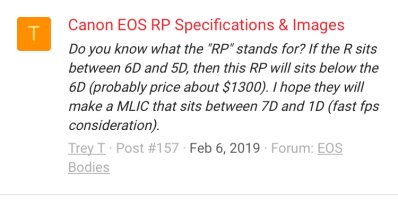I just do not see the appeal of the R. I had one on loan for a month and really tried to like it as a light weight companion to my 5D Mark IV. I returned the R, bought a Sony A7RIII as my mirrorless lightweight, along with a Sigma MC11 adapter, to use my Canon glass when I want the mirrorless body.
I truly found nothing redeeming in the R. It lacks every feature I want in a good mirrorless camera, from IBIS to useful 4K video features and a joystick for my focus points. How about the simple ability to turn off the back screen when I don't need it. I could perhaps forgive the lack of 2 card slots, if, like Nikon, they put a next generation card in the camera. They did none of this. It's low light performance was terrible compared not only to the great low light performance of the Sony 7 RIII, but even my 5D Mark IV.
I scratch my head that as a 1DX2 user, you would truly choose the R if you needed to buy a replacement body today.

